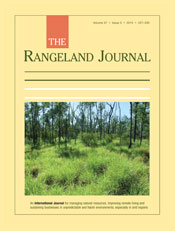RJ14097The relative impacts of grazing, fire and invasion by buffel grass (Cenchrus ciliaris) on the floristic composition of a rangeland savanna ecosystem
In a study of the effects of grazing, fire and invasion by buffel grass, livestock grazing with light to moderate stocking rates and burning were found to be compatible with the conservation of floristic diversity in the savanna of north-eastern Australia but the invasion of the exotic buffel grass, Cenchrus ciliaris, diminished plant abundance and diversity. Land clearing exacerbates the spread of buffel grass and the control of this practice is an important contribution to the conservation of these savannas.




